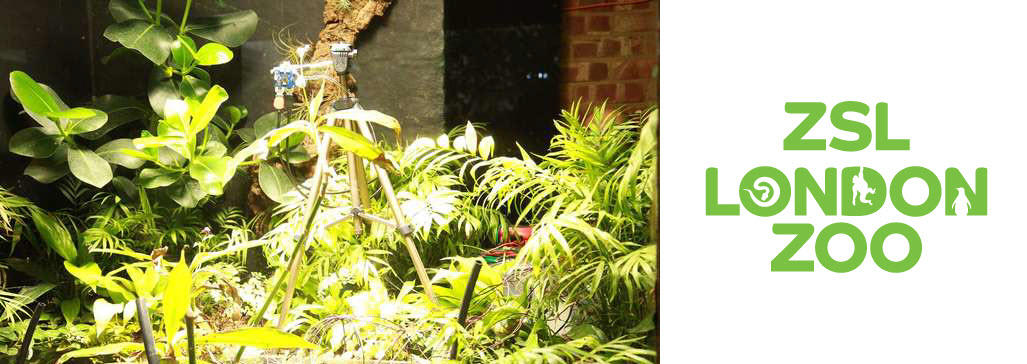
A fern called Pete growing at ZSL London Zoo has taken the world’s first plant-powered selfie – the result of a scientific trial that could revolutionise field conservation.
Earlier this year, ZSL scientists laid the groundwork for the technological feat by installing microbial fuel cells in ZSL London Zoo’s Rainforest Life exhibit, in order to power a plant to take its own picture – with the ultimate aim of using plants to power camera traps and sensors in the wild.
After spending the summer growing in strength, Pete – a maidenhair fern whose delicate leaves and shiny stalks are clearly visible in the images – has now begun taking his own selfies at an astonishing rate, heralding the trial a resounding success.
ZSL’s Conservation Technology Specialist Al Davies explained: “Seeing Pete’s first selfie was an incredible moment for the ZSL team, who have spent months monitoring and supporting his growth at ZSL London Zoo’s Rainforest Life exhibit.
“Plants naturally deposit biomatter as they grow, which in turn feeds the natural bacteria present in the soil, creating energy that can be harnessed by fuel cells and used to power a wide range of vital conservation tools remotely, including sensors, monitoring platforms and camera traps.
“Most power sources have limits – batteries must be replaced while solar panels rely on a source of sunlight – but plants can survive in the shade, naturally moving into position to maximise the potential of absorbing sunlight – meaning the potential for plant-powered energy is pretty much limitless.”
The ground-breaking solution, enabled by ultra low-powered technology created by US AI company Xnor.ai, works around the clock on any device while consuming such low energy it can be powered by a small plant.

As a result, it has the potential to monitor inhospitable and remote rainforest locations to record key data such as temperature, humidity, and plant growth – all of which are crucial to the understanding of threats such as climate change and habitat loss.
“We’ve quite literally plugged into nature to help protect the world’s wildlife: Pete has surpassed our expectations and is currently taking a photo every 20 seconds – he’s been working so well we’ve even accidentally photobombed him a few times!”
The ZSL team will continue to refine the technology before setting up a second trial in the wild.
Read the most up to date Fuel Cell and Hydrogen Industry news at FuelCellsWorks




